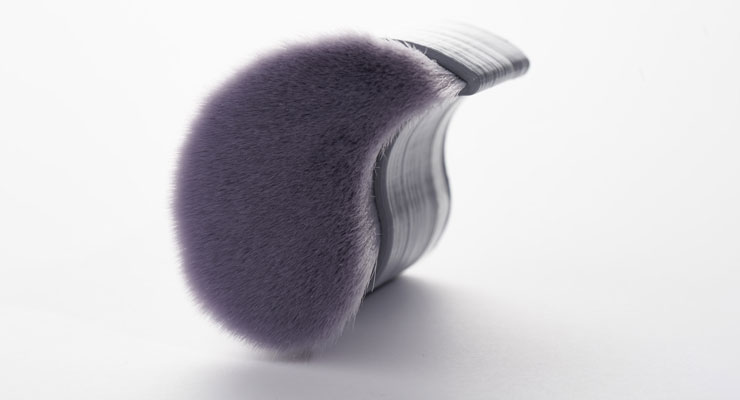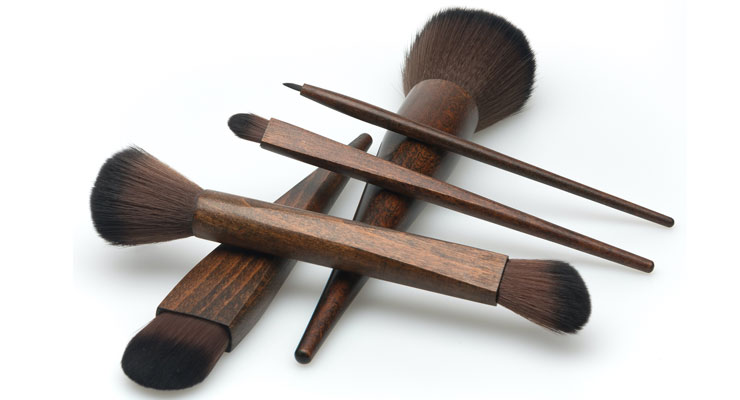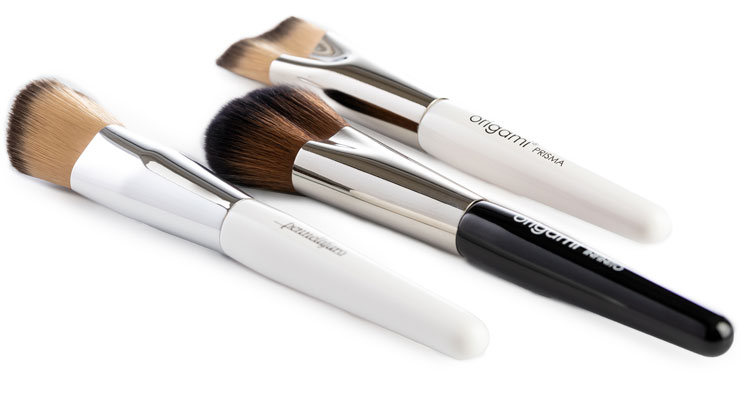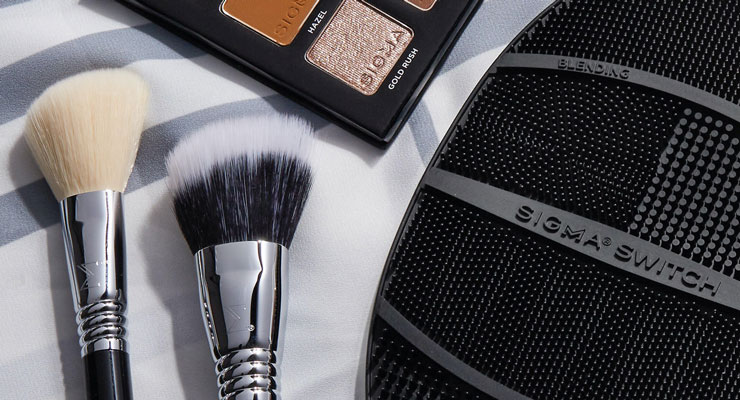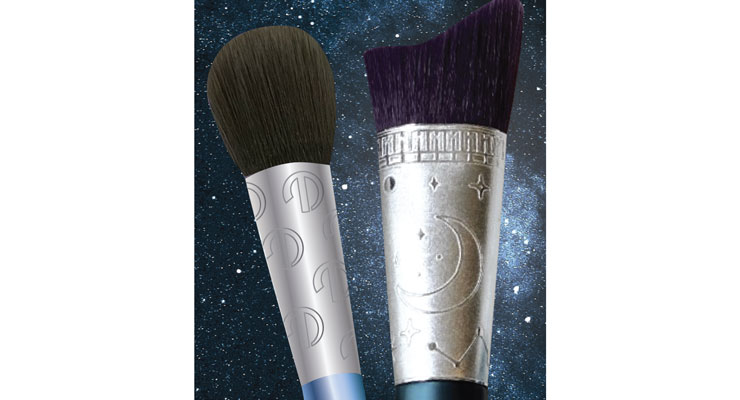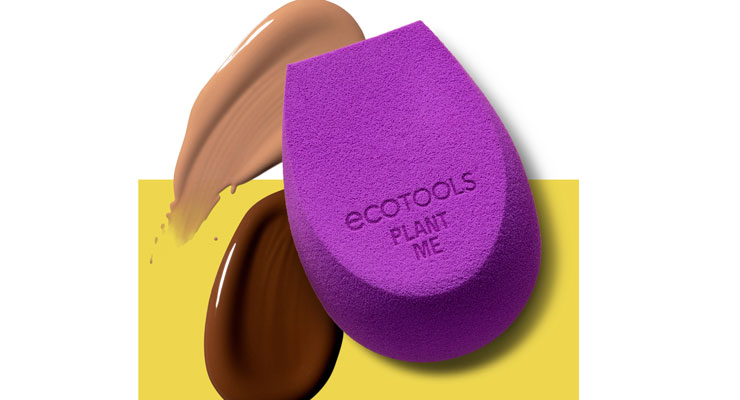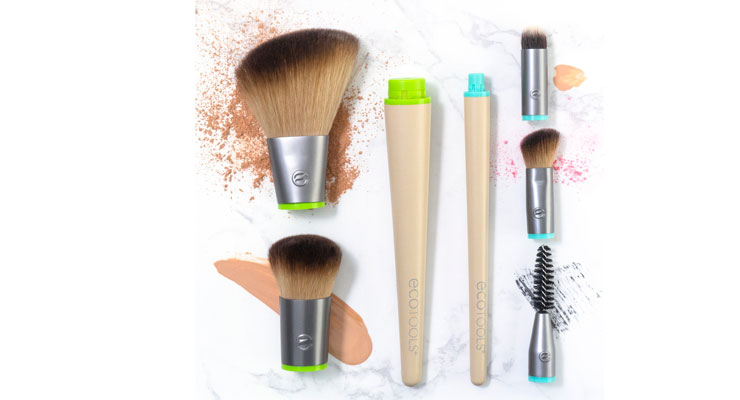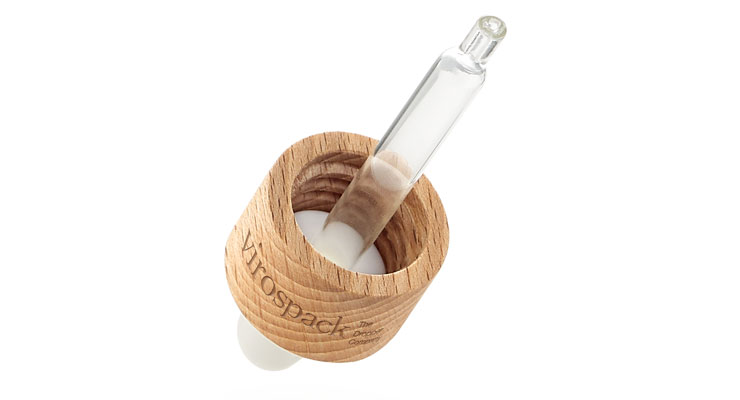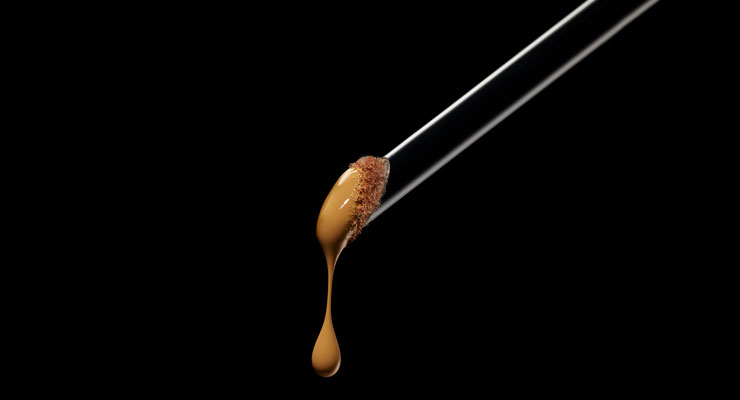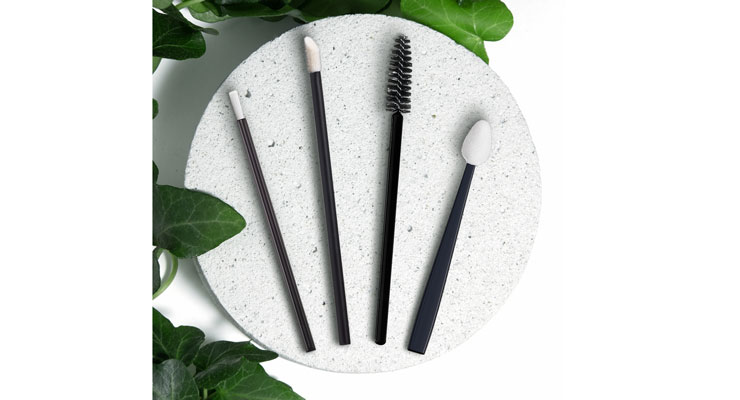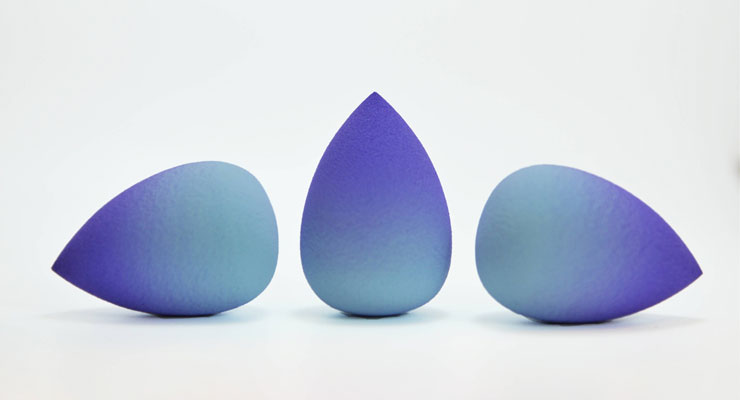Marie Redding, Senior Editor04.29.22
Cosmetic applicators, makeup brush sets, blending sponges, facial rollers, and other beauty tools are part of a growing category in the beauty industry. The global brush and beauty tool market is expected to rise from $3.21 billion in 2017 to $4.92 billion by 2028, representing a CAGR of 6.8%, according to Data Intelo.
Demand is also rising for cosmetic applicator foam, a material widely used for many types of cosmetic applicators. The global cosmetic applicator foam market size is projected to rise through 2028 at a 10.6% growth rate, Data Bridge Market Research reports.
Cosmetic applicators and brushes have been rising in popularity since the Covid pandemic began due to the need for touchless makeup testers and more hygienic ways to apply and test makeup. “Hyper-hygiene concerns are still driving demand,” says Anisa Telwar Kaicker, founder and CEO, Anisa International and Anisa Beauty.
There’s no shortage of innovation. As skincare and makeup become more closely related, many new solutions are possible and the rise of skincare-meets-makeup hybrid products. “Talking about application trends for both makeup and skincare, we see that the watchwords are ‘mix,’ ‘blend’ and ‘multipurpose,’ “ says Sara Zanafredi, CEO, Pennelli Faro.
As beauty brands strive to deliver specially designed applicators and brushes to make it easier for consumers to apply makeup like a pro, the self-care trend fuels the development of new types of skincare tools. Packaging suppliers are helping brands develop customized applicators and brushes, while focusing on sustainability.
What’s in Demand?
Beauty brands continually develop new makeup and skincare products, and many require applicators. Developing innovative ways to apply beauty products is Anisa International’s specialty.“Based on our research, today’s consumers are no longer seeking gimmicky items, but rather truly purposeful tools,” says Telwar Kaicker. “Coupled with that are the expectations for sustainably made and cruelty-free products. Brushes and tools designed with PCR or other sustainable materials are most often requested,” she says. The supplier offers handles made in various sustainable materials, including PCR, bamboo, FSC-certified wood and more.
Beauty brands often request brushes for complexion makeup, according to Telwar Kaicker. Skincare is also becoming a growing new category for applicators and tools. “Self-care is a big trend. Consumers are looking for bath, body and skincare products that offer an at-home spa experience,” she says.
Inspired by the heightened demand, Anisa International developed new brush designs for its Body & Buff Collection. It features a variety of innovative brush head designs, including Anisa’s patented paisley-shaped Nova brush head. The collection is ideal for applying all body products, including self-tanners, foundations, illuminators and bronzers.
Raphael Makeup Brushes/Max Sauer is a supplier that often fulfills custom requests for brands looking for a way to differentiate. “We develop each of our brushes with a custom ‘secret’ mixture of fibers,” Marianna Cilauro, sales manager, explains. “Our engineers work this mixture to perfectly match our customers’ makeup formula,” she says.
Cilauro says Raphael’s flat foundation brush is in high demand and often becomes a best-seller for beauty brands. “It has a generous flat shape and high-quality fibers to ensure a smooth application,” she explains. It is used for applying skincare or makeup.
Pennelli Faro’s Zanafredi says brands often ask for multifunctional shapes, all-over applicators, and multi-formula brushes. “Mask brushes, foundation applicators, mixed tools for blush and powders, and eye blender brushes are the most requested models,” she says.
Eco-Conscious Brush Designs
Several brush suppliers are responding to the call for more sustainable packaging and materials. Raphael’s “Green Earth” Brush Collection is the supplier’s newest and most popular innovation.The brushes are designed without a ferrule, eliminating metals, making them more eco-conscious. “We offer many brush options made with vegan hair, vegan glue, and handles in FSC-wood or bamboo. These provide the sustainability story brands are looking for,” says Cilauro.
Raphael also offers a Shell +Recycled Plastic Brush. The handle is made from oyster shells sourced from France’s oyster industry. “The plastic is 100% natural, bio-sourced, and recyclable,” says Cilauro.
Raphael's Ocean Brush is a 2022 winner of MakeUp in NewYork's IT Awards.
Pennelli Faro offers an innovative mono-material brush called “Solo.” The patented brush is made from post-consumer waste sourced from water bottles. “Plastic should not be demonized. It has a place in manufacturing cosmetic applicators,” says Zanafredi. “Every component in our Solo brush is the same material—even our synthetic fiber comes from recycled plastic. It is made using 100% recycled and recyclable ground plastic and is fully recyclable,” she explains.
The supplier says its Solo brush also reduces material use during manufacturing. “Using material sourced from waste streams and recycled materials, rather than virgin, allows us to develop high-performing applicators that are beautiful yet eco-friendly, with a lower environmental impact,” says Zanafredi.
Garrett Hewitt International (GHI) says “eco-friendly” and “vegan” are the most frequent requests for brushes from beauty brands. But labeling a brush “vegan” is often an issue since brushes are assembled with glue. “We worked closely with a glue manufacturer to develop a vegan glue that meets strength and compatibility requirements—so now true vegan brushes, not just vegan bristles, are a reality,” says Jason Clerke, president, Garrett-Hewitt International.
Since aluminum ferrules inhibit recycling, GHI developed a range of brushes that don’t require them. “The ferrule is integrated into the handle. The brush’s synthetic fibers are also made from plastic—so the entire brush is biodegradable,” says Clerke. “When our organic additive is added to the plastic, the brush is biodegradable in a landfill or marine environment in less than ten years,” he explains. “Compare this to the 400 years it would take without the additive,” he says.
GHI can add this biodegradable additive to most of its plastic cosmetic and skincare packaging. “After the plastic breaks down, the waste product left is an organically-rich sludge that adds nutrients to either the landfill or marine environment,” says Clerke.
Design Innovations for Applicators & Tools That Work Better
Consumers want better-performing brushes, and the team at Pennelli Faro continually finds innovative ways to make its brushes more functional. The supplier offers brands “Fless,” a flexible brush with a circular handle designed to “wear” on the fingers. “It follows natural face lines and fits intuitively in the user’s hand,” says Zanafredi.Pennelli Faro’s “Origami” collection of patented applicators has pre-shaped heads made with synthetic fiber. “The brush heads are sculpted like a mold to face lines—to adapt perfectly to facial contours while applying makeup products,” she says.
The supplier’s “Origami Prisma” brushes are for foundation products. “We’ve changed the shape of the ferrule to create an ergonomic hollow that perfectly adapts to the angularities of the face,” says Zanafredi. Another collection, “Origami Infinito,” is for powder products and features a double ergonomic hollow with a narrow side and a wide surface area. “We have lightened the heart of the brush head to make the gesture of blushing easier while keeping powdering efficacy,” explains Zanafredi.
Pennelli Faro has launched its Origami design with smaller brush heads, including a patented concealer brush and eyeshadow brush. “The double hollow on our eyeshadow brush makes it perfect for applying duo eyeshadow products or for using blending techniques,” says Zanafredi.
Sigma Beauty is a brand fulfilling the consumer’s desire for professional quality beauty tools. Once known only by professional makeup artists, Sigma recently announced a partnership with Target—bringing its sought-after brush sets to the masses.
Sigma’s eye brushes, face brushes, brush sets, and eyeshadow palettes are now available in 408 Target stores in select markets nationwide. “We make innovative and solution-oriented products and hold numerous patents. We are thrilled to bring the best of our product innovations to Target customers,” says Simone Xavier, founder and CCO, Sigma Beauty.
Sigma’s brushes are made using the company’s exclusively-engineered synthetic fibers. Sigma also makes brush cleansers and accessories, such as the best-selling ‘Sigma Switch,’ shown. The double-sided silicone mat pulls liquid foundation, cream makeup, and powder pigments from bristles so users can switch colors without using a liquid brush cleanser.
Taiki USA gives beauty brands a way to differentiate with a custom look—with etched designs on brush ferrules. “We recently launched a new technology for etching brush ferrules and can create a 360-degree design,” says Jan Wilson, vice president of sales and development, Taiki USA. “It’s a 3D deco versus a printed one to deliver an elevated look. It is also sustainability-driven because no inks are required,” says Wilson.
Unique Features for Brushes & Blenders by EcoTools
EcoTools utilizes several of the latest supplier innovations for its collection of brushes and applicators. The mass-market brand is leading the pack in innovative sustainable design. The brand’s brush collection, “Interchangeables,” is fully customizable and reduces material use. It features a variety of brush heads, which snap on and off the same handle. “Our team continuously tries to push boundaries. We wanted to offer the consumer a way to simplify their routine while also producing products that eliminate unnecessary materials,” says Liz Chon, SVP Innovation & Marketing.One Interchangeable set is the “Daily Essentials Face Brush Set.” It comes in a sleek reusable tin to give consumers convenient space-saving storage. The set includes two brush handles with five brush heads with synthetic bristles. “The handles are renewable bamboo, and the ferrule is aluminum,” says Chon.
EcoTools’ BioBlender sponges are made from an innovative material containing five proprietary ingredients. It is 100% biodegradable and will degrade within 180 days in a home compost environment. Each blender is the brand’s exclusive flat-top tapered shape and says “Plant Me.” They come in various sizes, in vibrant purple.
“We strive to make the idea of ‘eco’ easy—by helping consumers get the most out of their makeup while also doing a little good for the planet by creating less waste in the process,” says Chon.
Applying Makeup with Precision
The best brushes need to pair well with the product they are designed to apply, and suppliers often work with beauty brands to ensure a brush’s compatibility with a formula. The team at Kendo Brands’ KVD Beauty wanted a “fingertip-like” application for its Good Apple Lightweight Full-Coverage Concealer. The doe-foot applicator, attached to the vial’s cap, was developed to mimic a fingertip for more precision and a soft-touch feel. It fits perfectly in the curve beneath the eyes.The concealer is in a recyclable black vial with a gradient decoration, paired with a cap made from 70% post-consumer recycled materials. “This package is a testament to KVD Beauty’s ongoing dedication to world-consciousness and choosing more sustainable packaging,” a representative said.
Raphael/Max Sauer Group’s team worked with Yves Saint-Laurent to custom-design a lip brush for YSL’s Rouge Sur Mesure, a beauty tech device that allows users to create a custom lipstick at home. The brush is designed to give users the best application experience. “It is both magnetic and nomadic to blend and apply the created color to perfection,” says Cilauro.
Rollers & Droppers for Skincare
Skincare tools and devices are surging in popularity. “Consumers are looking for ways to elevate their DIY at-home experience with new types of applicators, tools and treatments,” says Telwar Kaicker. “The demand is higher for tools that can apply product and treat the skin simultaneously—such as applicators made with cooling zinc alloy or rollers made of genuine amethyst,” she says.Anisa International offers brands a roller designed with a scoop handle to mix products that must be stirred before application.
Droppers will undoubtedly always remain the most widely used way to apply serums, which are popular for skincare, haircare, nail care—and more. “A few years ago, applying a liquid blush or highlighter with a dropper was unthinkable, but today it is common,” says Rosa Porras, marketing communication manager, Virospack.
Dropper packs are precise and airtight. “Producing droppers is more complex than it seems because many requirements must be met,” says Porras. Virospack offers a variety of dropper applicator packs with glass pipettes and different bulb designs—including its innovative wood dropper cap, a first for the industry. Different wood finishes offer customization, such as walnut, birch and oak. “We are now offering new ecological-natural finishes,” says Porras.
Virospack’s wood dropper is made with a single-piece wood collar. It is fully compostable and recyclable. “There’s no plastic, and no glue. Only wood, responsibly sourced,” says Porras. “Since it doesn’t require a plastic inner cap glued to the wooden shell, it reduces the dropper’s carbon footprint,” she says.
Blenders, Sponges, Flocked Applicators & Puffs for Makeup
A wide range of cosmetic products are applied with blenders, puffs, sponges, and other types of applicators—but especially makeup. Beauty brands and retailers also need to source disposable applicators, which are crucial for testing stations and sampling.Qosmedix is a supplier known for its sustainable applicator designs. The company offers bamboo and FSC-certified paper applicators, which Sari Sternschein, president, Qosmedix, says were the first of their kind in the beauty industry. The new PCR disposable cosmetic applicators were added to the company’s EQO-friendly collection. “The collection includes applicators for eye shadow, lip gloss, lipstick, and mascara—and all feature handles made from 100% post-consumer recycled plastic. These items are ideal for hygienic makeup application, testing, and sampling in a retail setting,” she says.
The supplier says they are committed to providing environmentally friendly alternatives as part of their “Qosmedix Cares” initiative. “We will be donating 1% of profits from the sales of EQO-friendly products to The Nature Conservancy’s Plant a Billion Trees program, which helps restore forests around the globe,” says Sternschein. Qosmedix has also earned a Silver Certification from EcoVadis.
The Penthouse Group is known for its wide variety of highly functional applicators and material innovations. The supplier continually offers new sustainable innovations. “Our Fair Trade Natural Rubber sponge, trademarked “NRFT,” is from our Yukilon partner in the Far East. The natural rubber is sourced from farms that meet the highest standards for employment practices and sustainability—and with confirmed compliance, we allow a brand to use our exclusive ‘NRFT’ logo,” says Steven Ostrower, president, The Penthouse Group.
Beauty blenders are one type of popular applicator made using this material. “During the manufacturing of our ‘NRFT’ material, the natural latex allergen is removed before we blend our ‘NRFT’ with traditional synthetic NBR, for added durability,” he explains.
The Penthouse Group’s “Flocked Foam Powder Puffs” are ideal for pressed and loose powder.
The supplier also offers brands the option to incorporate recycled flock into flocked applicators for lip color and other products. “Our partner in Germany, Erzi Flock, has added recycled flock as an alternative to virgin flock for their line of lip gloss and other specialty flocked applicators,” Ostrower explains.
Another popular applicator is the cosmetic puff, and more brands are upgrading to high-end versions, according to The Penthouse Group. We see a shift toward using velvet puffs, which are ultra-luxurious,“ says Ostrower. They are similar to those used by high-end brands in Japan and Korea—and we offer the plushest velvets with long pile and full denier acrylic fibers,” he says. “They can be customized with colors, decoration, or embroidered ribbon bands,” he adds.
Looking Ahead—What’s Next in Development for Applicators?
We asked packaging suppliers what’s coming down the pipeline next for applicators and brushes. Anisa International says next year’s launches are already in the works, based on sales team input, beauty brands’ requests, and the latest trend forecasts.“We have invested heavily in our R&D and now have over 90 patent-protected brush designs. We do the work to protect our intellectual property so that brands have access to our arsenal of unique, innovative designs to help them stand out in the market,” says Telwar Kaicker.
Qosmedix says it is phasing out its plastic-handled cotton swabs and converting them to paper or wood as countries begin to ban plastic cotton swabs. “We’re continually exploring new materials, especially for disposable cosmetic applicators,” says Sternschein.
The team at Raphael Makeup Brushes /Max Sauer says there is always an upcoming brush innovation in development. “Finding brush shapes that add to the consumer’s experience is part of our innovation initiative. It is all about finding the next new material for tomorrow,” Cilauro says. The supplier has a zero-waste factory and uses energy-efficient manufacturing processes.
Qosmedix’s Sternschein says the company is committed to innovation and sustainability in the coming years. “We have a responsibility to retailers, beauty brands, and professional makeup artists to ensure there is no risk of cross-contamination between clients, and we take this seriously. We will also keep striving to accomplish this in even more environmentally-responsible ways,” she says.
Virospack says its team continually works to overcome challenges. “We are always optimizing our designs, searching for new materials, and developing sustainable dropper packs that can increasingly reduce environmental impact,” says Porras.
Pennelli Faro says its expertise in Italian brush manufacturing is key for innovation. “It allows us to offer cutting-edge products and anticipate market trends,” says Zanafredi.
“We have been working a lot with our R&D department, especially in the direction of minimalism, sustainability and multi-functionality, keeping in mind what the pandemic taught us,” Zanafredi says. She adds, “We will start presenting our 2022 new projects at the Cosmoprof Bologna exhibition, at the end of April.” Stay tuned.

